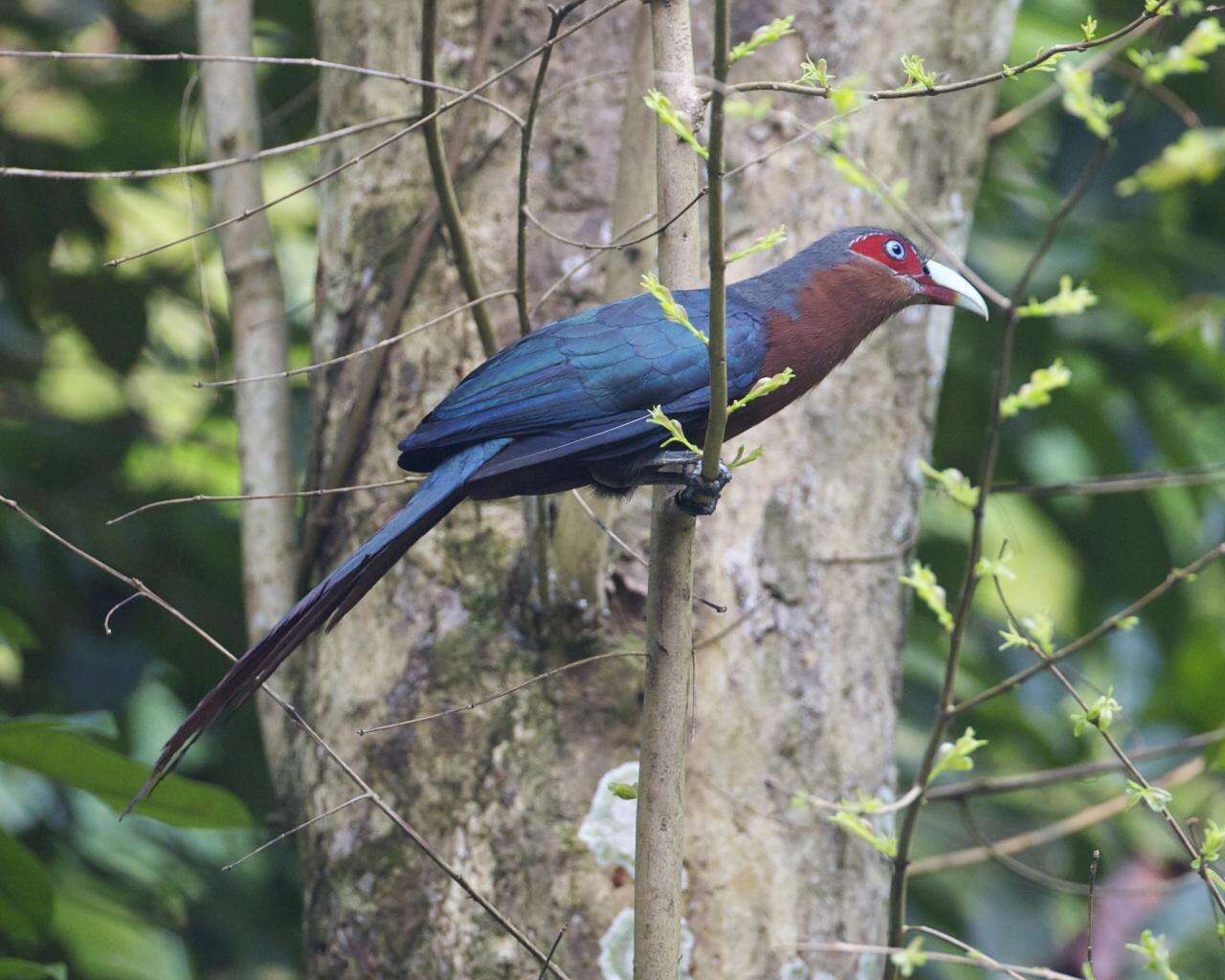In the realm of nature’s creations, there exists a bird that exudes an undeniable charm and resembles a lovable clown. The Chestnut-breasted Malkoha (Phaenicophaeus curvirostris), a member of the cuckoo family (Cuculidae), stands as a testament to the unique and diverse wonders of the avian world. Its comical appearance and intriguing behaviors make it a captivating subject that draws both tourists and enthusiasts alike.
These feathered jesters, with their amusing clownlike features, never fail to catch the eye of onlookers. Found mainly in Southeast Asia, spanning from Myanmar to eastern Java, the Philippines, and Borneo, these cuckoos are known for their distinctive appearance. Measuring up to 49 cm (19 inches), these individuals command attention with their playful demeanor.

The Chestnut-breasted Malkoha’s distinctive features include a bright red face, pale staring eyes, and a unique bill arrangement with a pale upper and red lower mandible. Their upper body showcases a dark glossy greenish hue, while their lower body boasts a rich chestnut-brown color. Their movements exhibit a sluggish and mammal-like quality, allowing them to blend seamlessly with the dense foliage of subtropical or tropical moist lowland forests and mangrove forests. Occasionally, they join other species in foraging excursions within lowland and hill forests.

Remarkably, both males and females share similar plumage, with males typically sporting pale blue irises and females displaying yellow ones. Unlike many of their cuckoo relatives, Chestnut-breasted Malkohas do not practice brood parasitism. Instead, they take charge of building their own nests and raising their offspring. The breeding season varies across locations, occurring from August to December in Borneo and January to September in Southeast Asia.

During the breeding season, male and female pairs collaborate to construct a nest measuring around 35 cm (14 inches) in diameter, made of small branches and twigs. This nest encloses a leaf-lined depression or cup, measuring approximately 11 cm (4.3 inches) in diameter and 5 cm (2.0 inches) in depth. Subsequently, a pair of matte white eggs measuring about 34 x 28 mm each is laid. Both male and female birds take turns incubating the eggs, which typically hatch around 13 days after being laid. The parents diligently feed the young birds, nurturing them within the safety of the nest for approximately 11 days before they venture outside for the first time.
In the realm of diet, these malkohas are carnivores, preying on small vertebrates such as lizards, frogs, insects, bugs, small crabs, and even nestling birds. Their diverse food sources ensure a well-rounded nutritional intake, allowing them to attain their maximum size and reproduce successfully. The availability of abundant food resources plays a pivotal role in their growth and survival.

The Chestnut-breasted Malkoha was first discovered and documented in western Java by the English naturalist George Shaw in 1810, who named it Cuculus curvirostris. Presently, this species remains relatively common, with no significant declines or threats that warrant its classification as endangered.

For those captivated by the endearing presence of these feathered jesters, an opportunity to share your admiration awaits in the comment section below. And do not forget to show your appreciation by hitting the like and share buttons, and staying tuned for more captivating insights into the world of nature’s wonders.






